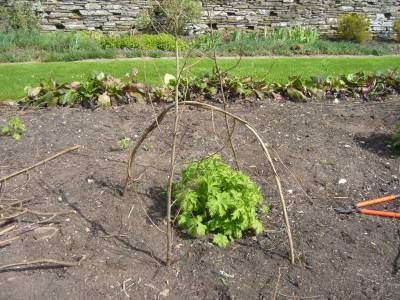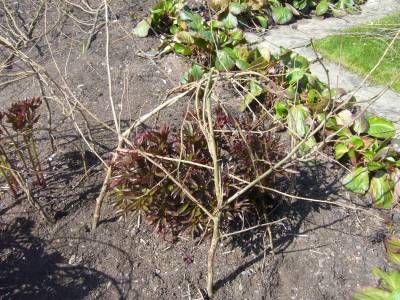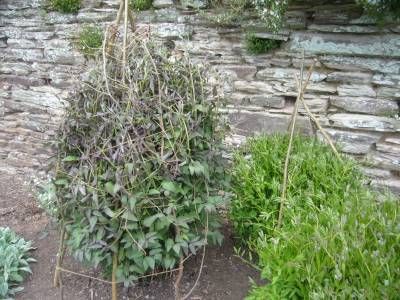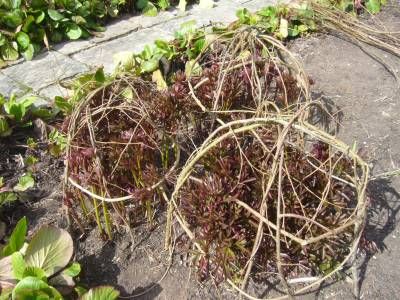Regular visitors to Hestercombe may have noticed some hazel structures popping up around the Formal Garden. These are actually our way of staking some of the herbaceous plants that are likely to flop over if not supported. Hazel staking offers an attractive alternative to metal link stakes, plus it is also a lot of fun to do!
The hazel (Corylus avellana) was coppiced from the Landscape Garden and car park areas over the winter, before the buds started to break. We then bundled and stored the hazel until we are ready to use it for staking. The hazel is now dead, so it won't shoot when you stick it in the ground.
The plants that require staking in the Formal Gardens include Delphinium, Paeonia (peony), Aster, Galega (goat's rue), Alcea (hollyhocks) and Clematis. It helps if you know how big the plant you are going to stake will grow, and if you know what kind of growth habit it has. This will help you to tailor the stake to the needs of the plant. For example, the Delphinium will grow quite tall and bushy whereas the Clematis recta will grow straight up and then flop down over itself.
Also, construct your hazel supports before the plant you are staking gets too big. This will make it much easier and you are less likely to damage the plant in the process.
This is how we make hazel plant supports:
Place two equal sized hazel stems on opposite sides of your plant. Push them into the ground far enough that they are strong and sturdy (you don't want them to pop out!) Twist the two stems around each other so that they form an arch. The friction of the twist should hold the stems in place. the height of the arch needs to be appropriate to the size of the plant. Ideally the leaves and shoots of the plant will grow up through the hazel and hide the support. Do this two or three times more with more hazel stakes spaced out around the plant in a ring. You may wish to use six or eight stems of hazel per plant support. This will create a dome over your plant.

You can use any side stems that are sticking out to create to 'side bars' to the dome. Just twist them into place in the same way. Alternatively, you can use a thin whippy piece of hazel and weave it in and out of the upright hazel stems to give some horizontal support.

You can be as creative as you like! Make the hazel support in any shape to fit the shape of the plant or clumps of plants that you have. Just remember, don't get too carried away by making your structures too tall or too dense with hazel twigs that nothing will shoot up through.
You might like to use some string or garden twine to secure the hazel into position. This can be quite a useful technique if you are short on hazel.
Finally, push any 'fly away' twigs inside the dome to make it look neat and tidy.
For the Clematis recta we do the supports slightly differently. I usually make a tripod using thick, straight, branch-less hazel stems and tie it with string at the top. I then position branched hazel stems around the base and twist or tie them into position. The tripod gives this type of Clematis (which is a shrubby type rather than a climber) some solid support whilst the hazel sticks stop it from flopping all over the bed or the lawn.

Why not have a go at making your own plant supports? Its great to use your imagination and the end result is natural looking and rustic!





